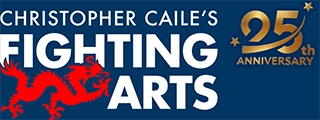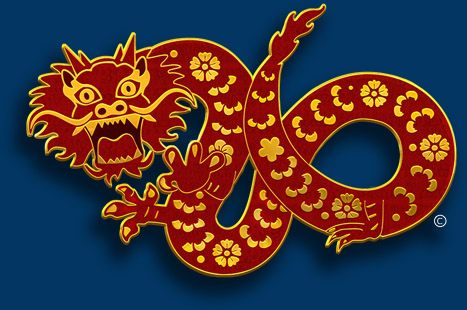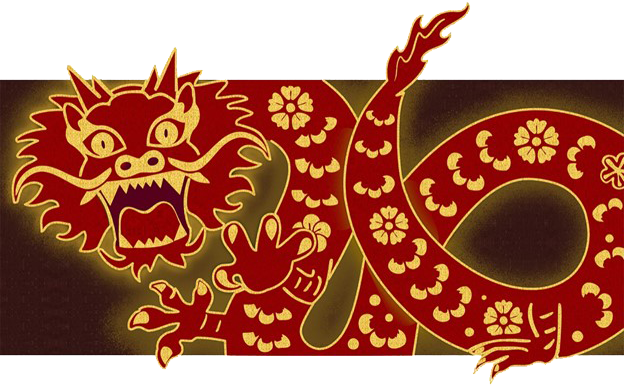Bujitsu
by Christopher Caile
The term refers to specializations of the combat arts developed prior to 1600 primarily practiced (crossed trained) by the military class (bushi or samurai) for the battlefield to kill other professional warriors. Technique were brutal, straight-forward and effective, tested and refined through centuries of battlefield experience. Complementing the combat skills within bujitsu were strict moral precepts and ethics of conduct – something known today as bushido ("bushi," meaning warrior, "do," meaning way) or way of the samurai, but at the time referred to as budo. This is an earlier but different definition of the term (budo) as referring to "do" based martial disciplines. See: Budo. See below for the definition of Bu and Jitsu.
A pervading influence within bujitsu practice was Zen. Mediation (practiced awareness without thought) helped the warrior focus and commit fully to action without second thought, fear, emotional attachment, or thoughts of the self – attributes reinforced by Zen precepts of non-attachment and indifference to life. This produced a useful mind state and edge amongst the frenzy and fear of combat Zen thus complemented the Samurai's stoic and ascetic attitude, one of iron will backed by willingness to sacrifice. Other authorities, however, suggest that an esoteric branch of Buddhism (Shingon sect) was also an important influence on bujitsu practice. Shingon employed incantations and mystical secret practices (use of symbols, ritual purification, magic words, hand movements, finger configurations) to unify the mind, calm the spirit, build ki (intrinsic energy of Chi in Chinese) bolster determination (almost hypnotic faith) and create specific mental states useful in battle.
After 1868 (post-feudal era) bujitsu changed emphasis. No longer having a military rational, replaced by modern armaments, bujitsu began to be practiced as a means of moral, ethical and spiritual education. Thus discipline and education replaced technique as primary focus. As such bujitsu became indistinguishable to most from Classical Budo, a situation that has created confusion between terms and continues to do so today. Bujitsu is also known koyru bujitsu (koyru meaning "old tradition.")
Bu: (Jap) Military or related to the military . A character often compounded into others such as bugei, bujitsu and bushi. The character for Bu is a composite of two others. The bottom inside left character is foot suggesting advancing on foot, and the right upper larger character is a prototype of a halberd (a type of lance) implying to cut, menace, pierce or kill. When combined they can be interpreted as advancing on foot with a weapon for potential use, thus referring to a warrior or by extension things military. There is also an important secondary interpretation. The first character meaning foot has also come to mean stop, based on the idea of planting the foot. Taken in conjunction with the second character of halberd, "bu" can be thus interpreted as a means to stop a weapon (conflict), or to gain peace. This is consistent with the idea of practicing budo to achieve both inner and outer peace.
Jitsu: (J) (also spelled Jutsu) Method, truth, art of technique. A term used to classify by category those Japanese pre-1600 fighting disciplines, as Kenjitsu (the art or technique of the sword), or sub-category or specialization as iaijitsu (art or technique of sword drawing) whose principal focus was the development and perfection of effective combat techniques used to kill other professional warriors. Jitsu also implies the application and strategy employed by these methods. The actual schools (Ryu) or methods that taught these arts (under collective terms such as kenjitsu) generally used names based on their founder, lineage, philosophy or method.
About the Author Christopher Caile
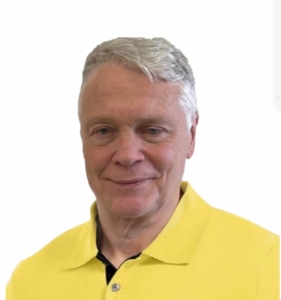
Screenshot
Christopher Caile is the Founder and Editor-In-Chief of FightingArts.com. He has been a student of the martial arts for over 65 years.
He first started in judo while in college. Then he added karate as a student of Phil Koeppel in 1959 studying Kempo and Wado-Ryu karate. He later added Shotokan Karate where he was promoted to brown belt and taught beginner classes. In 1960 while living in Finland, Caile introduced karate to that country and placed fourth in that nation's first national judo tournament.
Wanting to further his karate studies, Caile then hitch hiked from Finland to Japan traveling through Scandinavia, Europe, North Africa, the Middle East and South and Southeast Asia — living on 25 cents a day and often sleeping outside.
Arriving in Japan (1962), Caile was introduced to Mas Oyama and his fledgling full contact Kyokushinkai Karate by Donn Draeger, the famous martial artist and historian. Donn also housed him with several other senior international judo practitioners. Donn became Caile's martial arts mentor, coaching him in judo and introducing him to Shinto Muso-ryu under Takaji Shimizu.
Caile studied at Oyama's honbu dojo and also at Kenji Kurosaki's second Tokyo Kyokushinkai dojo. In his first day in class Oyama asked Caile to teach English to his chief instructor, Tadashi Nakamura. They have been friends ever since. Caile also participated in Oyama's masterwork book, "This Is Karate."
Caile left Japan with his black belt and designation as Branch Chief, the first in the US to have had extensive training in Japan directly under Oyama Sensei. As such, Oyama Sensei asked him to be his representative on visits to his US dojos to report on their status.
A little over a year later, Nakamura, Kusosaki and Akio Fujihira won an epic David vs. Goliath challenge match against Thailand's professional Muay Thai Boxers in Bangkok, Thailand, thrusting Kyolushinkai and Nakamura into national prominence.
Back in the US Caile taught Kyokushinkai karate in Peoria, Il while in college and later in Washington, DC. while in graduate school. Durimg this time Shihan Nakamura had moved to New York City to head Kyokushinkai's North American Operation.
In 1976 when Kaicho Tadashi Nakamura formed the World Seido Karate organization, Caile followed. Living then in Buffalo, NY, Caile taught Seido karate and self-defense at the State University of New York at Buffalo (SUNY Buffalo) for over 15 years where he also frequently lectured on martial arts and Zen in courses on Japanese culture.
Caile moved to New York City in 1999 to marry Jackie Veit. He is now an 8th degree black belt, Hanshi, training in Seido Karate's Westchester, NY Johshin Honzan (Spiritual Center) dojo. In Seido Caile is known for his teaching of and seminars on kata applications. He also produced a 14 segment video series on Pinan kata Bunkai currently available to Seido members.
Caile is also a long-time student and Shihan in Aikido. He studied in Buffalo, under Mike Hawley Shihan, and then under Wadokai Aikido's founder, the late Roy Suenaka (uchi deshi under Morihei Ueshiba, founder of Aikido and was Shihan under Tohei Sensei). In karate, Suenaka (8thdan) was also an in-house student of the Okinawan karate master Hohan Soken.
Having moved to New York City, Caile in 2000 founded this martial arts educational website, FightingArts.com. Twenty-five years later, in 2025, it underwent a major update and revision.
For FightingArts.com and other publications Caile wrote hundreds of articles on karate, martial arts, Japanese art, Chinese Medicine and edited a book on Zen. He also developed relationships with a cross section of leading martial arts teachers. Over the last four decades he has conducted extensive private research into karate and martial arts including private translations of the once secret Okinawan hand copied and passed on Kung Fu book, the Bubishi, as well as an early karate book by the karate master Kenwa Mabuni. He periodically returns to Japan and Okinawa to continue his studies and participate Seido karate events. In Tokyo he practiced (with Roy Suenaka Sensei) in a variety of aikido organizations with their founders – including private interviews and practices at the Aiki-kai Aikido Honbu dojo with the son and grandson of aikido's founder, Doshu (headmaster) Kisshomaru (an old uchi-deshi friend) and his son, Moriteru Ueshiba and in Iwama with Morihiro Saito. On Okinawa he studied Goju Ryu karate under Eiichi Miyazato, 10th dan founder of Naha's Jundokan, and also with Yoshitaka Taira (who later formed his own organization, who specialized in kata Bunkai. While there Caile also trained with Hohan Soken's senior student, Master Fusei Kise, 10 dan as well as with the grandson of the legendary karate master Anko Itosu.
Caile's other martial arts experience includes: Diato-ryu Aikijujitsu and Kenjitsu, kobudo, boxing, Muay Thai, MMA, Kali (empty hand, knife and bolo), study of old Okinawan Shoran-ryu & Tomari body mechanics, study of old Okinawan kata under Richard Kim, study of close quarter defense and combat, including knife and gun defenses, Kyusho Jitsu and several Chinese fighting arts including 8 Star Praying Mantis, Pak Mei (White Eyebrow), and a private family system of Kung Fu.
Caile is also a student of Zen as well as a long-term student of one branch of Traditional Chinese Medicine, Chi Kung (Qigong). As one of two senior disciples of Chi Kung master Dr. Shen (M.D., Ph.D.) Caile was certified to teach and practice. This led to Caile's founding of the The Chi Kung Healing Institute on Grand Island, NY. In Western NY, he also frequently held Chi Kung seminars, including at SUNY Buffalo and at the famous Chautauqua Institution in Chautauqua, NY. His articles on Chi Kung also appeared in the Holistic Health Journal and in several books on alternative medicine.
Caile holds a BA in International Studies from Bradley University and MA in International Relations with a specialty in South and Southeast Asia from American University in Washington, D.C. While in Buffalo, NY he also studied digital and analog electronics.
In his professional life Caile also worked in public relations and as a newspaper reporter and photographer. Earlier he worked in the field of telecommunications including Managing a Buffalo, NY sales and service branch for ITT. He then founded his own private telephone company. This was followed by creation of an electrical engineering company that designed and patented his concept for a new type of low-cost small business telephone system (which was eventually sold to Bell South). The company also did contract work for Kodak and the US space program. Simultaneously Caile designed and manufactured a unique break-apart portable pontoon boat.
Most recently Caile co-founded an internet software company. Its products include software suites with AI capability for control and management of streaming media, such as video and music, an all-in-one book publishing software product for hardcover, eBook and audio book creation and security software for buildings and government use.
For more details about Christopher Caile's martial arts, work experience and life profile, see the About section in the footer of this site.
Search for more articles by this author:
